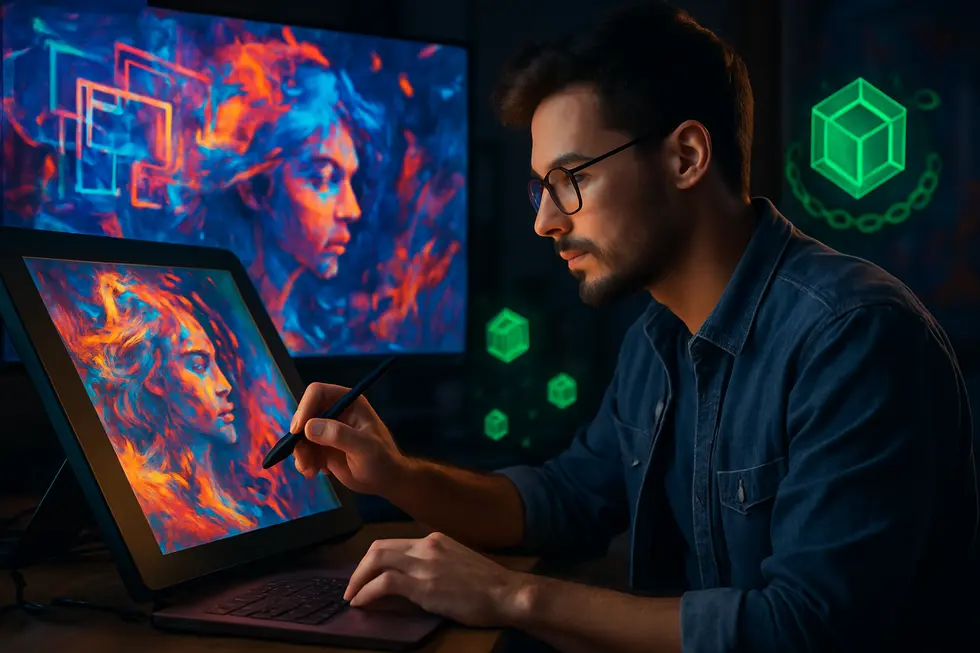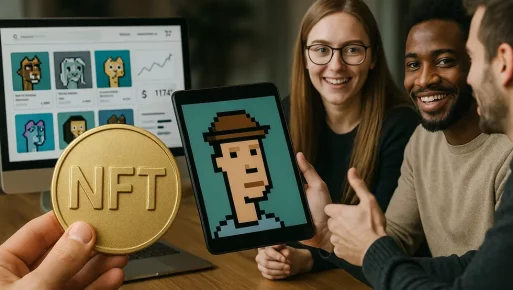The advent of Non-Fungible Tokens (NFTs) has ushered in a new era where art and technology converge, creating unprecedented opportunities for artists, collectors, and tech innovators. NFTs represent a revolutionary form of digital ownership, enabling creators to monetize their work in ways never before possible. This article delves into the intricate dance between art and code, exploring how NFT marketplaces like OpenSea are at the forefront of this digital renaissance. We’ll discuss the underlying blockchain technology, the exploration of metaverses, and the innovative transformations propelling this charged fusion of creativity and digital space. Each chapter builds upon the last to provide a comprehensive understanding of how NFTs and digital ownership are redefining artistic expression.
The Symbiosis of Art and Code: A New Digital Renaissance
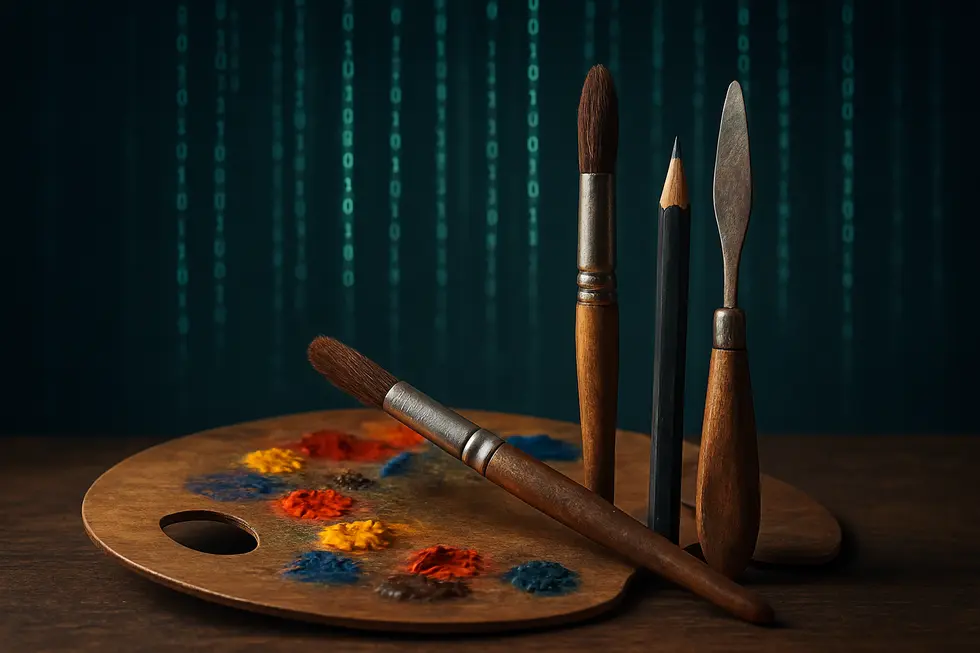
The intersection of art and code marks a pivotal evolution in creative expression, redefining the boundaries between human imagination and computational precision. For millennia, artists have harnessed the tools of their time—from pigments to cameras—to capture and reinterpret reality. The advent of computers in the 20th century introduced a new medium: digital art, where pixels replace paint and algorithms guide composition. This shift did not merely change how art is made; it expanded what art could be, enabling forms like video installations and interactive experiences that were previously unimaginable.
As technology advanced, so too did the complexity of artistic tools. The rise of artificial intelligence (AI) has further blurred the line between creator and creation. AI can now generate intricate patterns, suggest color palettes, or even produce entire artworks based on simple prompts—a process known as generative art. Artists are no longer limited by manual dexterity or traditional techniques; instead, they collaborate with machines to explore uncharted aesthetic territories. This partnership amplifies human creativity, offering new ways to experiment with form, texture, and narrative while raising profound questions about authorship, originality, and the nature of artistic skill.
NFT Marketplaces: Gateway to Digital Art and Ownership

NFT marketplaces have emerged as transformative platforms where the worlds of art and technology seamlessly converge. These marketplaces, such as OpenSea, facilitate the buying, selling, and trading of Non-Fungible Tokens (NFTs), which are unique digital assets secured on a blockchain. These platforms have empowered artists and creators by offering a new avenue to monetize digital artistry akin to limited editions of physical art. The transparent nature of blockchain technology ensures secure ownership, providing a verifiable proof of possession that alters the very concept of ownership in the digital age.
In this rapidly evolving landscape, NFT marketplaces have garnered significant attention, drawing millions of visitors and establishing vibrant communities around digital ownership. The evolution of these marketplaces is not limited to digital art but extends into virtual worlds, where NFTs play a pivotal role in the metaverse. Here, they establish property rights over virtual real estate and items, effectively creating a new economic frontier in virtual environments. As NFT marketplaces continue to innovate, they promise to reshape our engagement with art, technology, and the concept of ownership itself.
For further exploration of the role NFTs play in digital society, you can learn more here.
Blockchain: The Foundation of Digital Art’s Evolution
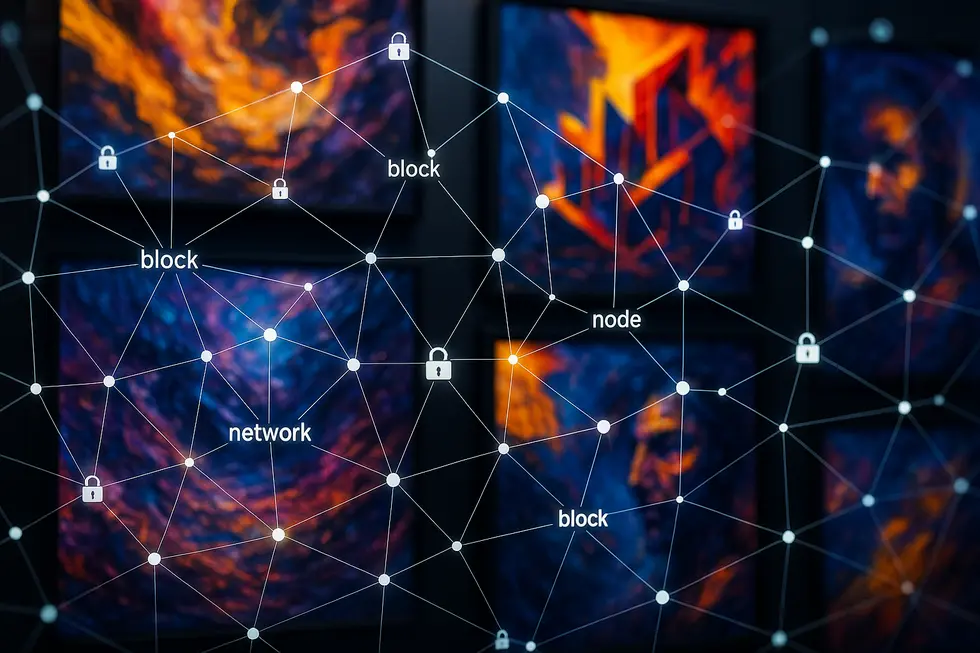
Blockchain technology has emerged as a fundamental catalyst in transforming digital art into a unique and valuable form of expression. By providing a secure, transparent platform, blockchain eliminates concerns over authenticity and provenance that traditionally plagued digital art. Through the use of digital certificates, artists can now authenticate their work, assuring buyers of its legitimacy and traceable ownership history. The emergence of Non-Fungible Tokens (NFTs) marks a turning point, as they allow digital works to be tokenized, embedding them with ownership rights and market value in a way akin to physical art.
NFTs empower artists to gain royalties from each resale of their work, enabled by smart contracts on the blockchain, revolutionizing how art is monetized. Moreover, blockchain is playing a pivotal role in decentralizing the art market, reducing reliance on traditional gatekeepers such as galleries and auction houses, thus offering artists a wider reach to global audiences. As this technology evolves, it continues to reshape digital expression, paving new avenues for creativity and commerce in the digital realm. To explore how blockchain is decentralizing the art market further, visit here.
Into the Metaverse: Unleashing the Digital Renaissance
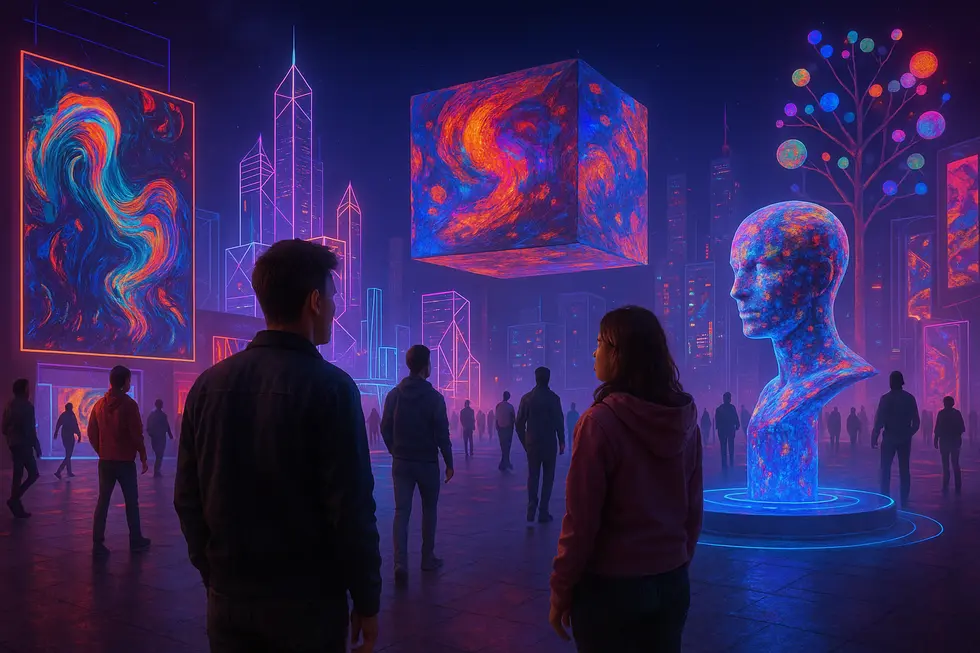
In the realm where art intertwines with code, the emergence of metaverses is setting the stage for a bold digital renaissance. With virtual reality (VR) as a catalyst, artists are sculpting immersive experiences that transcend traditional media, crafting interactive realms where viewers don’t just observe but participate. This transformation marks a shift from static displays to dynamic, communal experiences, redefining the landscape of digital expression.
The metaverse itself is akin to a boundless, augmented web, predominantly constructed on blockchain technology. This understructure ensures decentralized control, enabling creators to maintain ownership and fostering vibrant communities around digital art. Each virtual world within the metaverse offers distinct prospects for artistic collaboration and innovation, akin to unique, interconnected social landscapes of creativity.
As educational initiatives like the Fashion Institute of Technology’s Metaverse Design Competition demonstrate, the fusion of traditional artistry and digital entrepreneurship is nurturing a new generation of creators. These initiatives empower students to explore the confluence of fashion, art, and technology within virtual environments, showcasing the power of digital narratives. Additionally, NFTs create new opportunities for young artists to engage with their audiences. The metaverse promises a future where art, powered by VR and blockchain, knows no physical limits.
Trailblazing NFT Marketplaces: Redefining Digital Expression
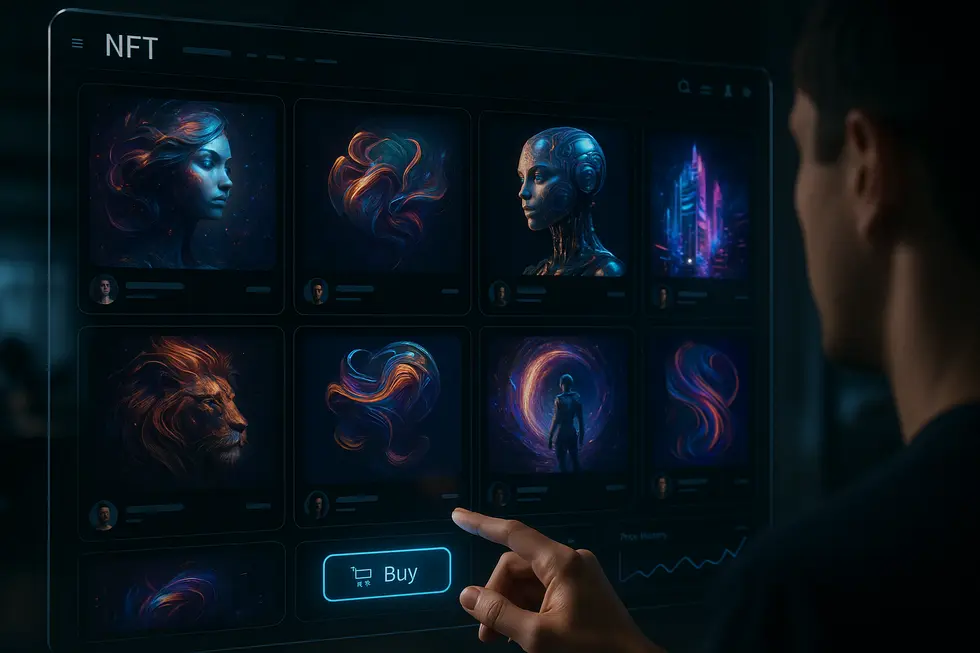
NFT marketplaces have undergone a remarkable transformation, standing at the forefront of digital expression and ownership. A crucial innovation is cross-chain compatibility, allowing NFTs to be traded seamlessly across diverse blockchain platforms such as Ethereum and Solana. This breakthrough enhances market liquidity and reduces transaction fees, thereby broadening the potential audience and participation. Furthermore, the integration of Decentralized Finance (DeFi) prompts a new wave of utility, where NFTs can serve as collateral for loans or contribute to yield farming. By evolving from static digital collectibles to dynamic financial elements, these assets become increasingly versatile and appealing. This evolution within NFT marketplaces not only democratizes art access but also invites a multitude of industries to reconsider their engagement strategies.
Such advancements foreground a significant shift in digital society, inviting discussions on how NFTs are not just influencing art, but reimagining ownership in an expansive digital landscape. As this paradigm continues to grow, it introduces promising opportunities for more impactful and financially inclusive digital ecosystems.
For further insights, visit different types of NFTs.
Embracing the Future: AI, Art, and Ownership in a Digital Renaissance
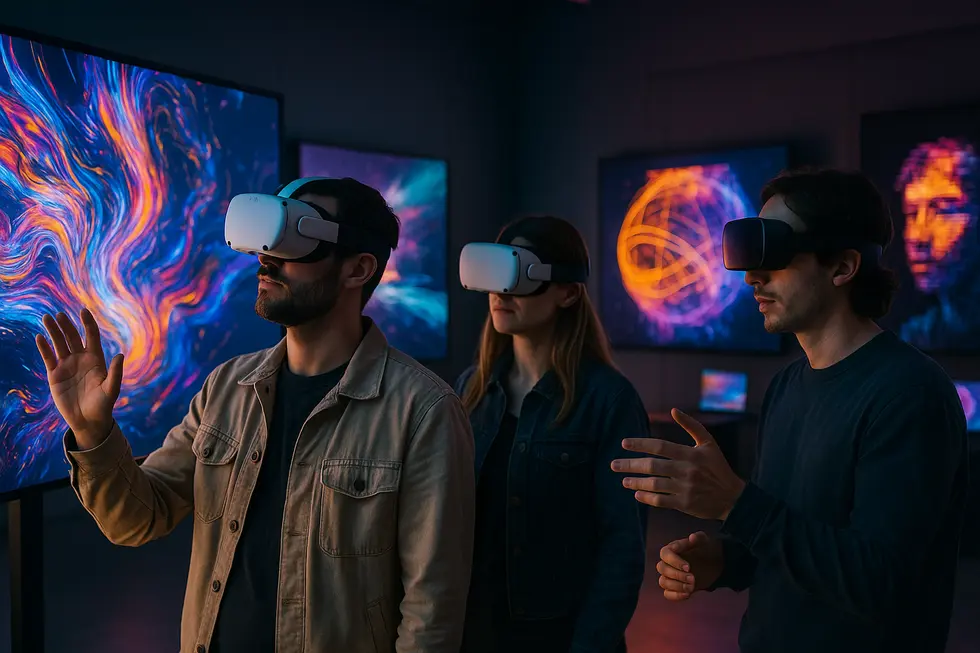
In the exhilarating landscape where art meets code, a digital renaissance is unfolding, heralded by the fusion of AI and innovative ownership models like NFTs. Artists are partnering with AI tools such as Midjourney and DALL-E, not as substitutes but as collaborators, to push creative boundaries and introduce novel artistic expressions. This symbiotic relationship expands the horizons of creativity, giving rise to dynamic, living artworks that transform and evolve over time.
Blockchain technology continues to redefine ownership, offering artists unprecedented control over their creations through decentralized markets. This not only democratizes art by removing traditional gatekeepers but also engenders new freedoms and direct marketing opportunities for artists on a global scale. Within such frameworks, the market for AI-generated art is anticipated to explode, with projections of growth from $298 million in 2023 to $8.6 billion by 2033.
However, the journey is fraught with ethical dilemmas concerning originality and identity, demanding a reflective dialogue within creative and legal spheres. By navigating these complexities, we shape a future where digital expression and ownership thrive symbiotically, heralding a new cultural epoch [link].
Final thoughts
As we navigate the intersection of art and code, it becomes clear that NFTs and digital ownership are more than fleeting trends; they represent a seismic shift in how we create, share, and value art. This digital realm invites artists and collectors to explore new paradigms of creativity and ownership. The ongoing fusion of technology with artistic vision promises a landscape rich with potential. As we’ve explored, the role of NFT marketplaces, blockchain, and metaverses are central to this dialogue. The future promises an even deeper integration of digital art within our cultural lexicon, redefining the role of art in our technology-driven society.
About us
Monbase Global is a strategic partner of OpenLive Group, focused on expanding the reach and utility of blockchain and digital asset applications across international markets. As a core collaborator in the Monbase NFT ecosystem, Monbase Global plays a vital role in driving cross-border partnerships, investment strategies, and user adoption beyond Vietnam. With a vision to build a decentralized digital economy rooted in trust and innovation, Monbase Global supports the international growth of NFTs, digital collectibles, and the use of the MBC token across various platforms. The partnership between Monbase Global and OpenLive Group brings together local insight and global ambition—creating real-world value for creators, collectors, and businesses alike.
🌐 Join the Monbase NFT community and stay ahead of the Web3 curve.
💬 Follow us on Telegram, Twitter, or Discord for drops and updates!
Facebook | X (formerly Twitter) | Telegram announcement | Telegram community


